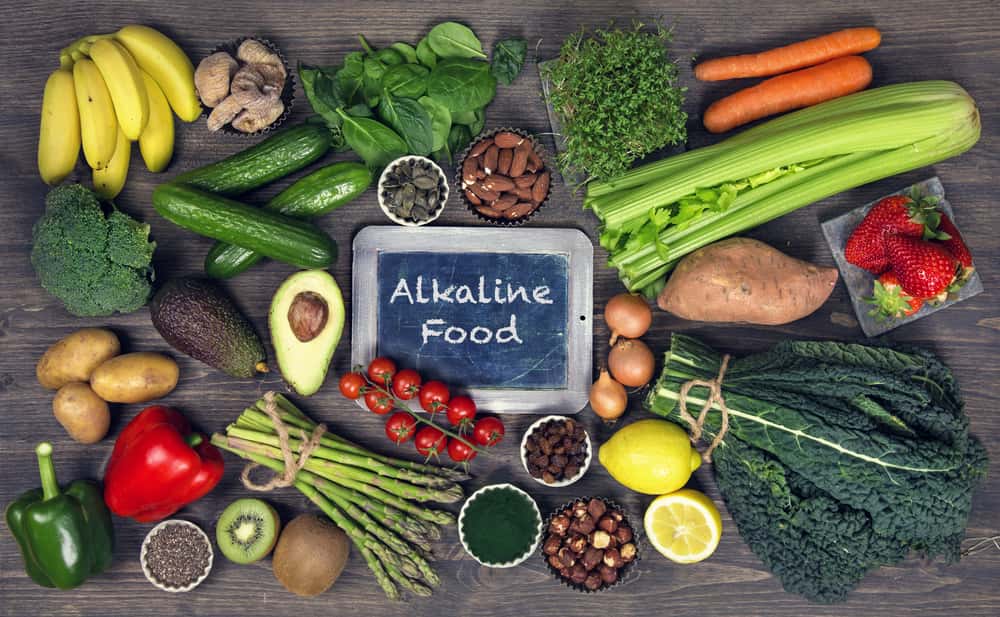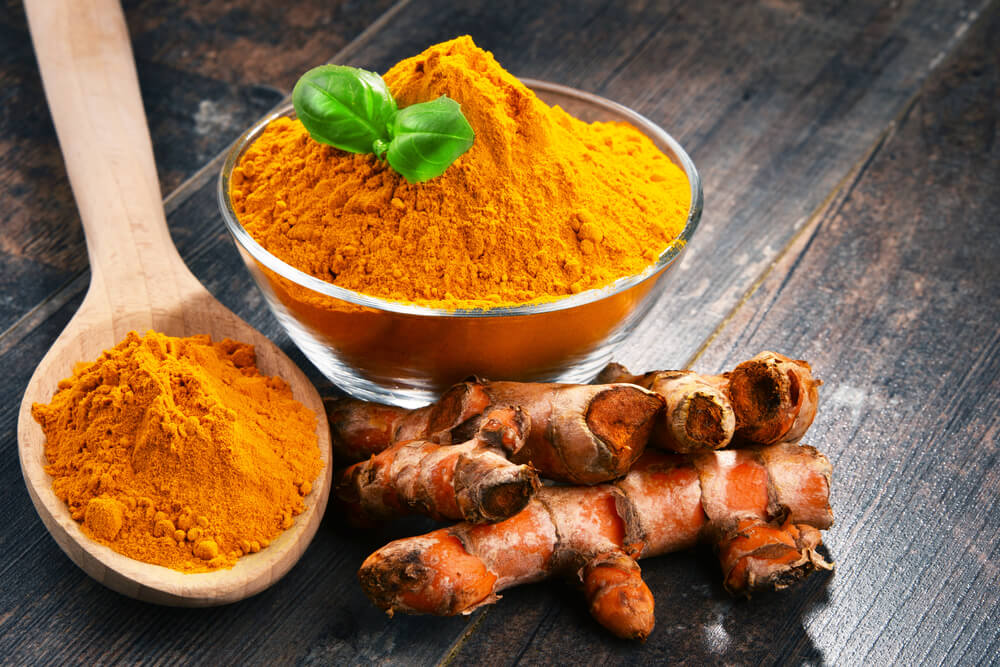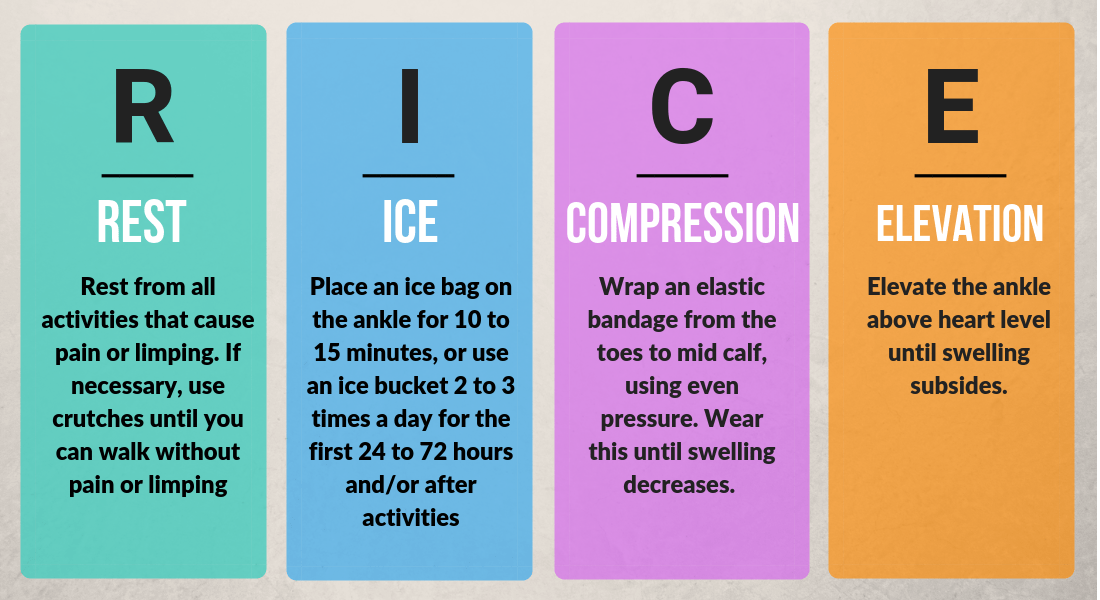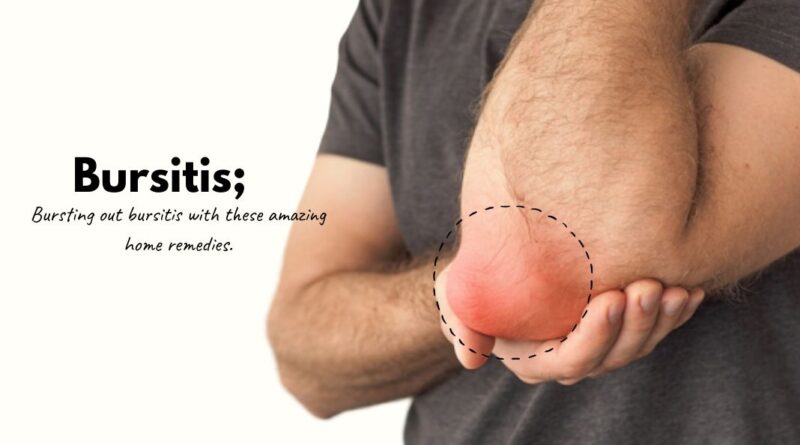How to Treat Bursitis Naturally? All You Need to Know
We have all either experienced or know someone who has suffered from joint pain in the knees, elbows and the hip. This pain in the joints is caused primarily due to inflammation of the fluid-filled sac, called Bursa, which cushions the muscles, tendons, etc. in the joints. Any injury caused to these sacs leads to pain in the joints. The medical terminology for this condition is Bursitis.
Bursitis is quite a common condition observed mainly between the age group of 30-60 years. Yet, it is often ignored, and patients brush it aside as a repercussion of old age. The name bursitis itself is often a misnomer(1), as not all forms of bursitis are due to a primary inflammatory process but are rather a swelling of the bursa due to a noxious stimulus.
Table of Contents
How to Treat Bursitis?
- Supplements
- Foods
- Herbs
- Alternative Treatments
- Home Remedies
Causes of Bursitis
Bursitis can be caused due to injury, infection or even due to bad sleeping postures. Some of the common causes of the occurrence of bursitis in the body are as follows.
- Elbow – Bending of the elbow continuously for a long time can lead to bursitis in the elbow. It commonly affects tennis players and golfers.
- Shoulder – The bursa sac in the shoulder can get inflamed if the shoulder is used for overhead lifting for a long time or while stretching the arms upwards.
- Ankle – Bursitis of the ankles is usually caused due to excessive walking and wearing the wrong footwear. Ice skaters and athletes are prone to be afflicted with this condition.
- Knee – Sitting with the folded knees for a longer duration of time and bending the knees excessively can cause inflammation of the knees causing bursitis.
- Hips – Bursitis can take place in the hip as well and is quite common in sprinters.
- Thighs – Even the thighs contain bursa or fluid-filled sacs and can get injured due to overstretching.
Thus, these are the main causes of bursitis which affects people from all walks of life, though it may seem more prominent in a sportsperson.
Symptoms
Bursitis is identified with pain in the joints, along with swelling in the affected area. The pain can sometimes be unbearable and render all movement. The afflicted joint feels tender even without any movement or touch.
Bursitis, which is caused due to an infection, is also known as septic bursitis and is associated with redness in the joints and fever. The affected area also tends to feel hot on touch. It is important to seek a doctor’s advice if the pain does not subside even after two weeks, and excessive swelling is experienced.
Bursitis is usually treated at home, and people avoid visiting doctors for treatment of the same. We bring to you some natural remedies which can help ease the pain in bursitis and also aid in curing the condition.
Bursitis can be treated by eating the right kind of food, taking enough supplements and consuming herbs. We have curated a list of supplements, food, and herbs which can be consumed to alleviate bursitis.
CURE 1: Supplements for Bursitis
Supplements can be consumed in the form of capsules, juices, vitamins, etc. which help in balancing all the required vitamins and minerals in the body. Some of the supplements which can help combat bursitis are:
1. Glucosamine Sulfate
Why does this work?
Glucosamine sulfate is a compound that is already present in the tissue that covers the bones, also known as cartilage. It helps in reducing the inflammation of the bursa.
How does this work?
Glucosamine sulfate is said to reduce inflammation, thus treating bursitis.
How much to use?
Glucosamine sulfate tends to increase the risk of bleeding and has been observed to increase cholesterol levels in patients. It is available in capsule form, but a doctor’s prescription is important before consuming these. Patients who consume blood-thinning medicines or have a history of diabetes should avoid taking this supplement.
2. Vitamin C

Why does this work?
Vitamin C helps in curing infections and is often recommended for treating common ailments. Vitamin C contains flavonoids, which help in repairing connective tissue in the joints as well as reduce inflammation of the bursa sac.
How to use?
Vitamin C supplements can be consumed orally as capsules, or by having food rich in Vitamin C like Oranges, lemons, etc.
How much to use?
Vitamin C supplements can be consumed on a regular basis for a healthy body though they are said to interfere with other medications like estrogen, chemotherapy, etc. Thus, it should be taken after consulting a doctor.
3. Bromelain
Why does this work?
Bromelain is a supplement found in pineapples and is known to reduce inflammation.
How much to use?
Bromelain is naturally available in pineapples, and thus, one can increase their consumption of pineapple. Alternatively, bromelain supplements are also available in tablet form.
How much to use?
Bromelain tends to increase the risk of bleeding and patients who consume blood thinning tablets, should avoid using bromelain tablets. It is essential that a doctor is consulted before consuming the supplements to avoid any side-effects.
4. Arnica Gel
Why does this work?
Arnica is a homeopathic topical gel which helps in reducing pain caused due to bursitis.
How to use?
Arnica gel should be applied topically on the affected area to get temporary relief from pain.
How much to use?
Arnica gel can be applied 2-3 times a day on the afflicted area.
Besides the above supplements, stinging nettle, Urticalcin, and Omega 3 fatty acids can also be consumed to treat bursitis.
CURE 2: Foods
For treating bursitis, it is essential to understand that non-alkaline foods aggravate the symptoms of bursitis while alkaline food products help in alleviating the condition. We have classified the food items for ease of reference.
1. Alkaline Food Items

One should increase their consumption of alkaline food items like green vegetables, whole grains, dry fruits, fatty fish, pineapples, mango, guava, kidney beans, etc. to combat bursitis.
Why does this work?
Alkaline food items help in reducing the inflammation in the joints and thus reduce the pain and symptoms of bursitis.
How to use?
These food items should be made part of the daily diet and consumed at regular intervals.
How much to use?
There is no medical restriction on consuming alkaline food items and thus, can be safely eaten. In case there is any negative side-effect or allergy to the alkaline food item, it should be reported to the doctor immediately.
If suffering from bursitis, one should avoid eating non-alkaline food items which are high in uric acid as they aggravate the inflammation and makes it difficult to cure bursitis. Food items which are non-alkaline are Eggs, citrus fruits, caffeine, tomatoes, alcohol, soft drinks, dairy products, animal fats, etc.
CURE 3: Herbs
Some herbs can work wonders in treating bursitis and should be consumed either orally, or as concoctions. Let us look at some of the herbs which can be helpful in reducing inflammation and pain.
1. Boswellia
Why does this work?
The Boswellia herb is useful in reducing inflammation of the bursa sac.
How to use?
The Boswellia herb can be boiled in water, and the concentrated water can be consumed for alleviating the inflammation(2).
How much to use?
The concoction of Boswellia herb should not be consumed in large quantities as it can interfere with blood-thinning medicines and lead to severe bleeding. It is recommended that you consult a doctor before consuming any herb.
2. Turmeric for Bursitis

Why does this work?
Turmeric has been used for reducing inflammation since the early ages and thus works well to cure bursitis.
How to use?
The patient can either consume milk spiced with turmeric, or it can also be consumed along with bromelain to get a stronger effect.
How much to use?
Turmeric, when taken along with bromelain, can cause excessive bleeding and should be consumed only under doctor’s supervision.
Also Read: Proven Health Benefits of Turmeric
3. White Willow
Why does this work?
White Willow has the same properties as aspirin and help in relieving pain.
How to use?
White Willow can be consumed as a tea by boiling ½ tsp with water.
How much to use?
One can have up to 5 cups of white willow tea in a day. It should not be consumed if the patient is already consuming aspirin or blood-thinning medicines.
CURE 4: Alternative Therapies
Bursitis can be easily cured using natural remedies like supplements, food, and herbs. But there are also some alternative remedies which help in treating bursitis.
1. Acupuncture for bursitis
Acupuncture is believed to immensely help in reducing the inflammation and swelling in the joints.
2. Chiropractic
There is no scientific proof that Chiropractic cures bursitis, but patients who have received this treatment have experienced reduced pain and swelling in the joints. Chiropractic uses joint manipulation, which assists in greater movement and also includes massage therapy.
3. Massage for bursitis
If the afflicted area is massaged gently, it is said to offer great relief from the pain. Though, it is important to note that if bursitis is caused due to infection, then this method should not be used.
Besides the above alternative therapies, homeopathy also offers a range of medicines and gels, which are said to provide relief from pain and swelling.
Also Read: Natural Remedies to Remove Dark Spots on The Thighs
CURE 5: Home remedies for Bursitis
Bursitis can also be treated at home by indulging in some self-care remedies. Two of the most popular self-care remedies are RICE and physical therapy.
1. RICE

RICE stands for Rest, Ice, Compression, Elevation. If one is suffering from bursitis, then they should ensure the afflicted joint is given enough rest, an ice pack is applied to it and then kept elevated. This helps in reducing the swelling and pain in the joints. An ice pack compression is vital for reducing the swelling.
2. Physical therapy for bursitis
It is common to see reduced mobility in bursitis, and thus, the patient should undertake some form of guided physical therapy where the joints are moved slowly to ensure they do not get frigid and allow movement.
Now that we are aware of how we can treat bursitis at home using natural remedies let us also appreciate how we can prevent it from happening in the first place. Below we have listed a few preventive measures to avoid the occurrence of bursitis.
Preventive Measures for Bursitis
Bursitis can be easily prevented if the right kind of efforts is made. It is observed that people who do not undertake regular physical movement suffer the most from bursitis as their joints are unable to take the shock from sudden physical movement.
It is recommended that a good amount of stretching is undertaken before starting an exercise routine. Also, one should not stretch too much at one go and avoid doing certain exercises, which causes pain in the muscles. A healthy, active life should be maintained with a good and well-balanced diet. It is only through the diet that we will get all the required vitamins and minerals to keep the body healthy and fit.
Thus, these are some of the remedies using which one can cure bursitis at home. These remedies are not scientifically proven but have provided relief to many patients. It is important to consult a doctor if the symptoms refuse to go after 15 days and the pain increases. Before consuming any of the above natural remedies, it is recommended that the doctor is consulted to advise if it is safe to consume the same based on your health and fitness. Bursitis is a painful ailment and can affect the daily life of the patient. Thus, it is vital that we try and prevent it as much as possible by regularly exercising and being active.
FAQs
1. How long does it take for Bursitis to heal?
If treated accurately and early, bursitis tends to heal within a few weeks. Though, if you continue to face pain, it is advised that you consult a doctor immediately.
2. What to do in bursitis?
Bursitis can usually be cured easily at home by following some natural remedies and techniques. If the pain does not subside even after one week, it is time to pay the doctor a visit.
3. Can we have bursitis even if we don’t stretch or injure the bursa sac?
Bursitis is usually caused when the bursa sac is inflamed though it is possible to experience pain in the joints even when the sac is not inflamed. The pain can be due to other reasons like weakness, tendonitis, etc.




